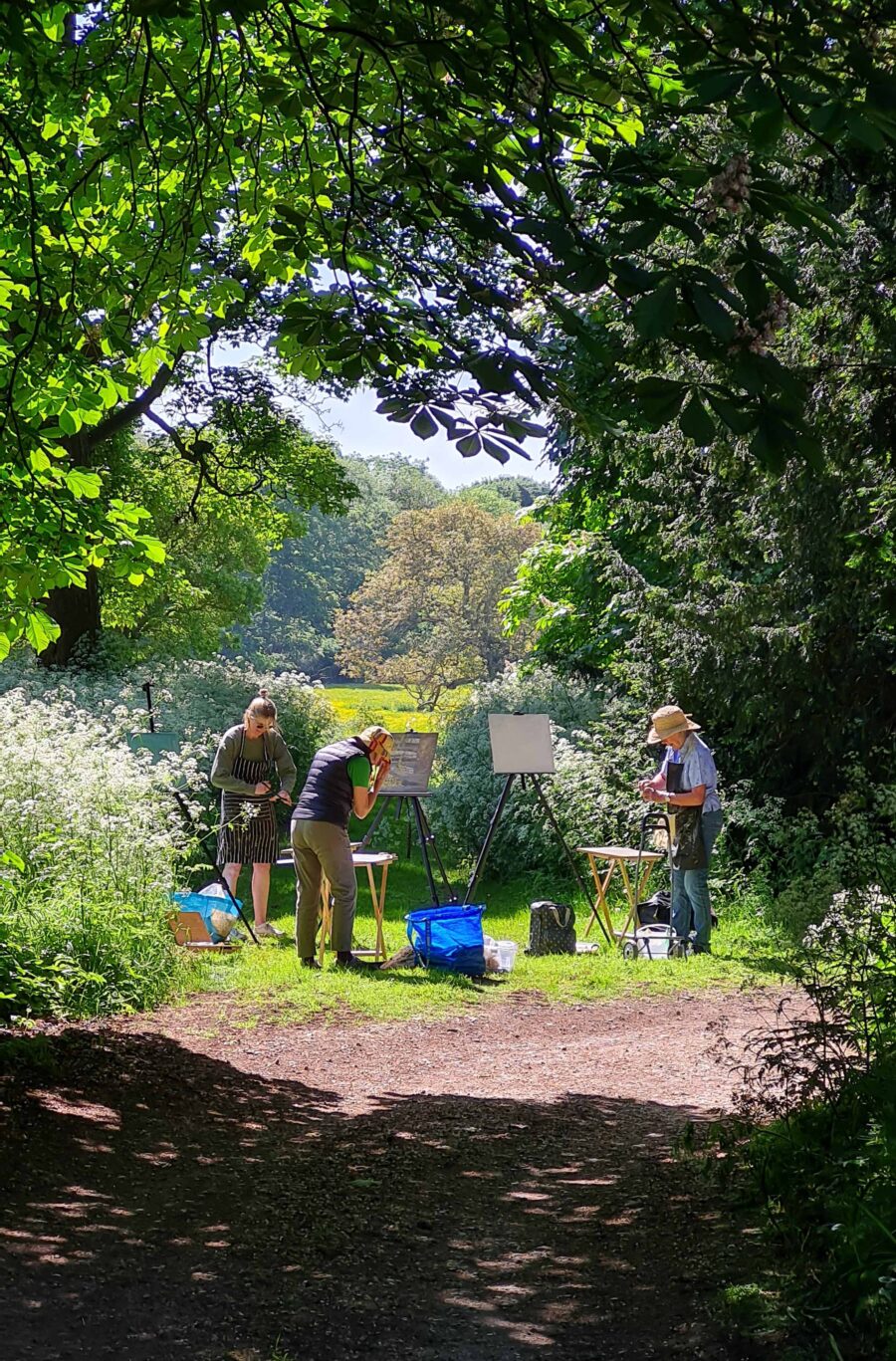Plein Air Painting
A delightful day painting outside today. We worked on some difficult concepts and though a couple of students may not have finished a painting, it was a steep learning curve and achievement can be measured in many different ways, so well done to all.

Plein air painting, which emphasizes the practice of creating artwork outdoors in natural light, underwent significant evolution in British and European art from the late 19th century into the 20th century. This movement transformed artistic approaches, influenced aesthetic sensibilities, and altered the representation of landscapes and everyday life. An essential aspect of this evolution was the advancement in materials, which greatly facilitated the practice of plein air painting.
The Late 19th Century: Impressionism Takes Hold
The plein air movement gained prominence in Europe during the 1860s and 1870s, largely propelled by the Impressionist movement in France. Artists like Claude Monet and Pierre-Auguste Renoir sought to capture the transient effects of light and atmosphere. A key factor that allowed this shift was the invention of portable paint tubes. Prior to this, artists had to mix and prepare their paints in the studio, which limited their ability to work outdoors. The availability of oil paints in tubes made it easier for artists to transport their materials and work spontaneously in natural settings.
In Britain, this influence was palpable among artists such as Alfred Sisley and J.M.W. Turner, who had already explored the effects of light in their atmospheric landscapes. The lightweight easels developed during this period also contributed to the mobility of artists, allowing them to set up their workstations quickly in varied outdoor locations.
The Newlyn School in Cornwall, with artists like Stanhope Forbes and Frank Dadd, embraced this plein air technique, focusing on local landscapes and coastal scenes. Their use of vibrant colors and the immediacy of outdoor painting were made possible by these advancements in materials. The result was a distinctive approach that emphasized the play of light and color in a way that traditional studio painting could not capture.
The Early 20th Century: Expanding the Scope
As the 20th century unfolded, plein air painting continued to thrive, increasingly diverging from Impressionism. The introduction of synthetic pigments further expanded the color palette available to artists. These pigments, developed in the late 19th and early 20th centuries, provided brighter, more stable colors that allowed for greater experimentation.
In France, artists like Henri Matisse and André Derain incorporated these synthetic pigments into their works, creating vibrant, emotionally resonant landscapes. This period saw an explosion of color and a more expressive use of brushwork, marking a shift in how artists engaged with the natural world.
In Britain, the Bloomsbury Group, including Vanessa Bell and Duncan Grant, began to integrate these modern materials into their work. Their landscapes reflected a blend of traditional techniques and modernist experimentation, showcasing a renewed exploration of color and form.
Mid to Late 20th Century: A New Vision
The mid-20th century introduced new materials and techniques that further transformed plein air painting. Acrylic paints, developed in the 1940s and 1950s, emerged as a popular alternative to oils. Their quick drying time and versatility allowed artists to work more rapidly outdoors, responding to changing light conditions without the long wait associated with oil paints. Artists like Patrick Heron and Barbara Hepworth utilized these modern materials to explore abstract forms while maintaining a connection to the landscape.
In France, the influence of movements like Cubism and later Abstract Expressionism led to the adoption of mixed media. Artists such as Jean Metzinger incorporated collage elements and unconventional materials, allowing for a departure from traditional plein air painting while still drawing inspiration from the environment.
Contemporary Plein Air Painting
In the late 20th and early 21st centuries, plein air painting experienced a resurgence, often intertwining with contemporary issues such as environmentalism and urbanization. Artists continue to utilize a variety of materials, including watercolor, acrylic, and mixed media, to express their connection to the landscape. The availability of high-quality sketchbooks and portable watercolor sets has also made it easier for artists to paint on location.
The rise of digital tools has introduced another layer to plein air practices. Some contemporary artists use digital tablets and software to capture the essence of a scene before translating it into traditional mediums, creating a dialogue between the physical and the virtual.
Organizations and festivals dedicated to plein air painting, such as the Plein Air Festival in the UK, foster community and encourage artists to explore their environments. Contemporary artists draw inspiration from the techniques of their predecessors while integrating modern materials and perspectives.
Conclusion
Plein air painting has undergone a remarkable transformation within British and European art from the late 19th century to the present. Advancements in materials—such as portable paint tubes, synthetic pigments, and acrylics—have played a crucial role in this evolution, enabling artists to engage with their surroundings in new and dynamic ways. By capturing the beauty of the natural world while addressing contemporary themes, plein air painting remains a vital and dynamic force in the art world, inviting both artists and viewers to engage deeply with the landscapes that surround them.
